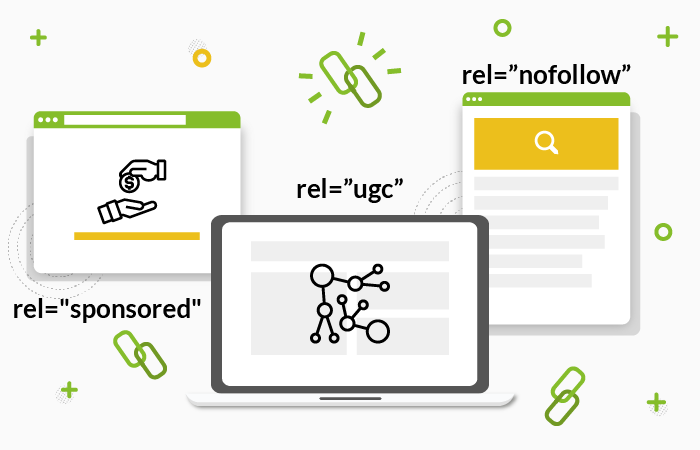New types of Google links - what will change, how to prepare for it?
Updated: 16th September 2022
Reading time: 6 min
Acquiring links is, apart from creating properly profiled content, one of the main elements of website optimization. Links help get traffic as well as improve site credibility in the eyes of algorithms.
Until now, you could give the link one of two attributes: dofollow or nofollow. They informed Google robots about whether to "follow" the link and evaluate the associated website or not.
Dofollow attribute
These types of links increase the value of the page to which they lead. The more such links lead to a page, the better its position in search results.
Dofollow is the default attribute. Any link that is not marked differently will be treated as dofollow. However, you can set it in an HTML tag. From a practical point of view, it does not matter.
A link without an attribute in the page code looks like this:
<a href="http://www.webwavecms.com">link</a>
The link with the dofollow attribute is:
<a href="http://www.webwavecms.com" rel="dofollow">Link</a>
Google's algorithms will treat both links in the same way. Therefore, the first - shorter version is usually used.
Nofollow attribute
Nofollow links appeared 15 years ago. Their introduction was a response to advertising content that flooded the Internet a decade and a half ago. It is primarily about comment sections under blog posts or articles that were swarmed with links that were supposed to artificially "pump" the value of the target sites.
By giving the nofollow attribute you inform Google robots that a given link should not be taken into account by search algorithms when assessing the page to which it links. The creators of the largest search engine recommended it for sponsored content.
Google is currently changing the approach to nofollow links. Until now (at least in theory) the page associated with the nofollow link was not assessed.
From March 2020, the nofollow attribute will be treated by the robots as a guide rather than as a directive. How does this work in practice? Links marked in this way need not be, but they can be analyzed, and therefore they can also affect the assessment of the page to which they lead.
WebWave AI Writer
Generate your website copy with just one click.
WebWave AI Writer
Generate your website copy with just one click
New link attributes
The division into dofollow and nofollow links was not perfect. Links from this second category contained a lot of valuable information for Google robots.
That is why the Mountain View giant decided to introduce new attributes for a more detailed description of the nature of the links. As a result, the search engine gained the ability to assess the quality of a bigger variety of links. At the same time, website developers have not lost the ability to mark content that they think should be omitted by algorithms (although, as we mentioned earlier, algorithms can still analyze them).
The new attributes have been described on the Google blog. Below we present their brief characteristics.
rel = "sponsored" - it is used to indicate sponsored content, ads or materials covered by a barter agreement.
rel = " ugc" - used for user-generated content. For example, comments or forum posts.
rel = "nofollow" - is an attribute that remains in use when new types of links do not apply and you want to indicate that the link to a given page is not to be analyzed by the search engine algorithm.
The new linking rules are designed to help the search engine analyze links more accurately. It will also help in analyzing more links.
How will the changes affect the positioning of pages?
If you have previously marked the sponsored links with the nofollow attribute, Google will still consider this attribute valid. Existing links do not need to be modified.
What's more, if you use CMS, which marks advertising and sponsored links as nofollow, you don't have to change its operation neither. However, Google recommends switching to the new system.
Generally speaking, using new attributes will allow you to index the pages they lead to. This should not affect the sites where the links are placed. It is important above all to distinguish advertising links from links with the dofollow attribute.
The use of new attributes is only a recommendation. Their use will begin to have a real impact on indexing in March 2020.
Conclusion
The new linking rules are designed to help the search engine analyze links more accurately. It will also help in analyzing more links. One thing remains unchanged - you should always remember to attribute links to links other than dofollow.
Author: Jan Chmielowski
Other articles.
WebWave website builder is your AI-powered solution for building an online presence. Create your website in 3 minutes, add an online store or a blog, and grow your business.
We created this website with WebWave.
Follow us on social media
